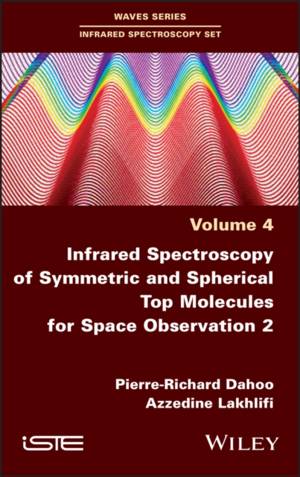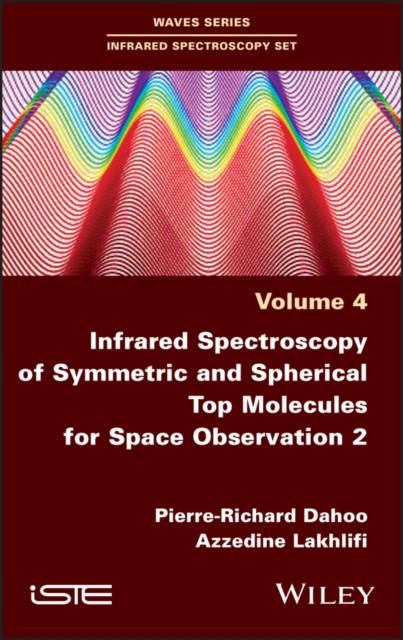
Door een staking bij bpost kan je online bestelling op dit moment iets langer onderweg zijn dan voorzien. Dringend iets nodig? Onze winkels ontvangen jou met open armen!
- Afhalen na 1 uur in een winkel met voorraad
- Gratis thuislevering in België vanaf € 30
- Ruim aanbod met 7 miljoen producten
Door een staking bij bpost kan je online bestelling op dit moment iets langer onderweg zijn dan voorzien. Dringend iets nodig? Onze winkels ontvangen jou met open armen!
- Afhalen na 1 uur in een winkel met voorraad
- Gratis thuislevering in België vanaf € 30
- Ruim aanbod met 7 miljoen producten
Zoeken
Infrared Spectroscopy of Symmetric and Spherical Top Molecules for Space Observation, Volume 2
Pierre-Richard Dahoo, Azzedine Lakhlifi
Hardcover | Engels
€ 241,45
+ 482 punten
Omschrijving
This book, Volume 4 in the series, is dedicated to the relationship between laboratory spectroscopy, recording ever-more-complex spectra using increasingly powerful instruments benefiting from the latest technology, and the development of observation using instruments that are embedded in mobile probes or nanosatellites.
The theoretical models described in Volumes 1, 2 and 3 are used in this volume, applying the cumulant theorem in the mean-field theory framework to interpret the near and mid-infrared spectra of symmetric top molecules, such as ammonia (NH3) and spherical molecules, such as methane (CH4). These molecules can be isolated in their gaseous form or subjected to the environmental constraints of a nano-cage (a substitution site, clathrate, fullerene or zeolite) or surfaces.
These methods are not only valuable in the fields of environmental sciences, planetology and astrophysics, but also fit into the framework of data processing and the concept of Big Data.
The theoretical models described in Volumes 1, 2 and 3 are used in this volume, applying the cumulant theorem in the mean-field theory framework to interpret the near and mid-infrared spectra of symmetric top molecules, such as ammonia (NH3) and spherical molecules, such as methane (CH4). These molecules can be isolated in their gaseous form or subjected to the environmental constraints of a nano-cage (a substitution site, clathrate, fullerene or zeolite) or surfaces.
These methods are not only valuable in the fields of environmental sciences, planetology and astrophysics, but also fit into the framework of data processing and the concept of Big Data.
Specificaties
Betrokkenen
- Auteur(s):
- Uitgeverij:
Inhoud
- Aantal bladzijden:
- 320
- Taal:
- Engels
Eigenschappen
- Productcode (EAN):
- 9781786306524
- Verschijningsdatum:
- 26/10/2021
- Uitvoering:
- Hardcover
- Formaat:
- Genaaid
- Afmetingen:
- 156 mm x 234 mm
- Gewicht:
- 621 g

Alleen bij Standaard Boekhandel
+ 482 punten op je klantenkaart van Standaard Boekhandel
Beoordelingen
We publiceren alleen reviews die voldoen aan de voorwaarden voor reviews. Bekijk onze voorwaarden voor reviews.











